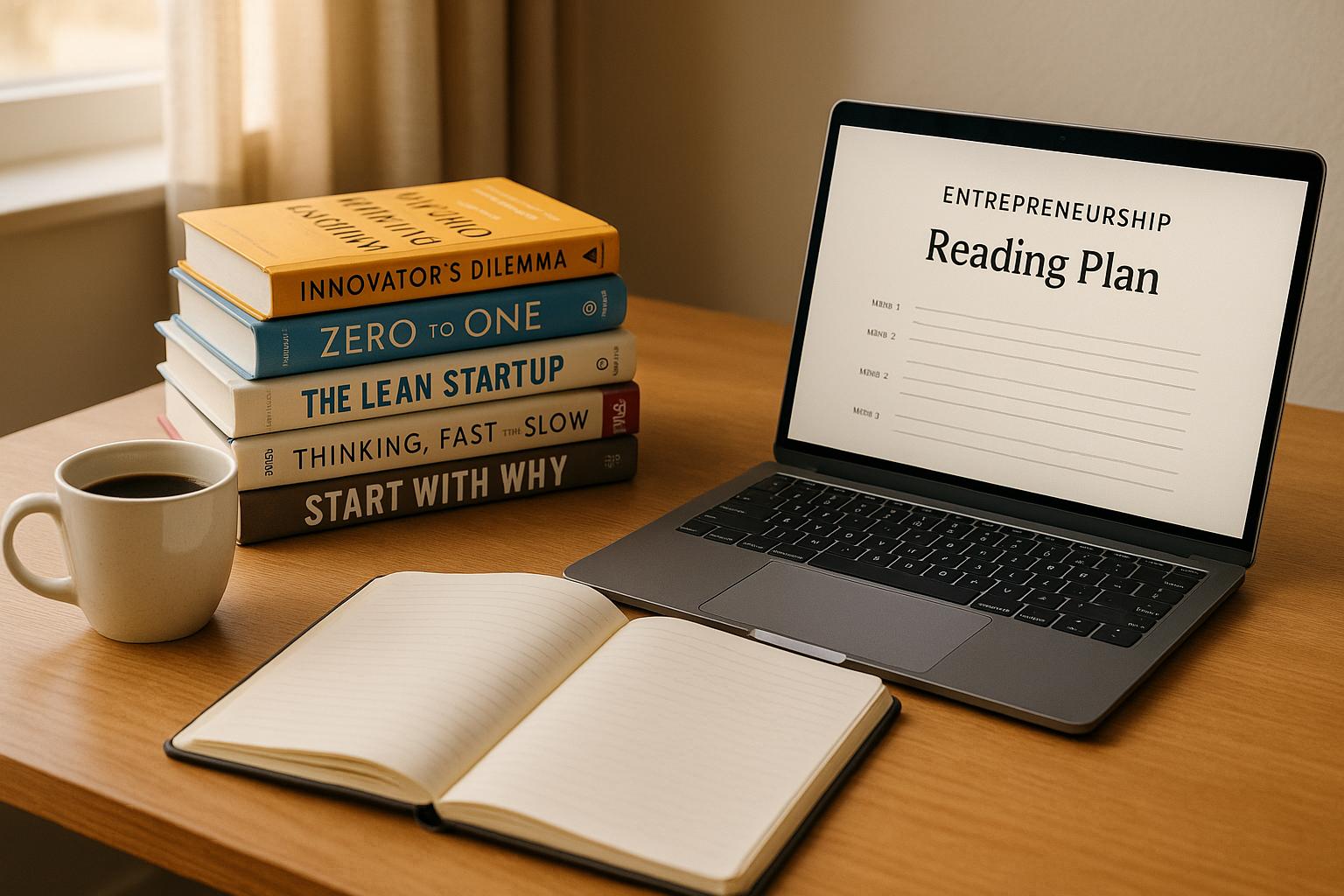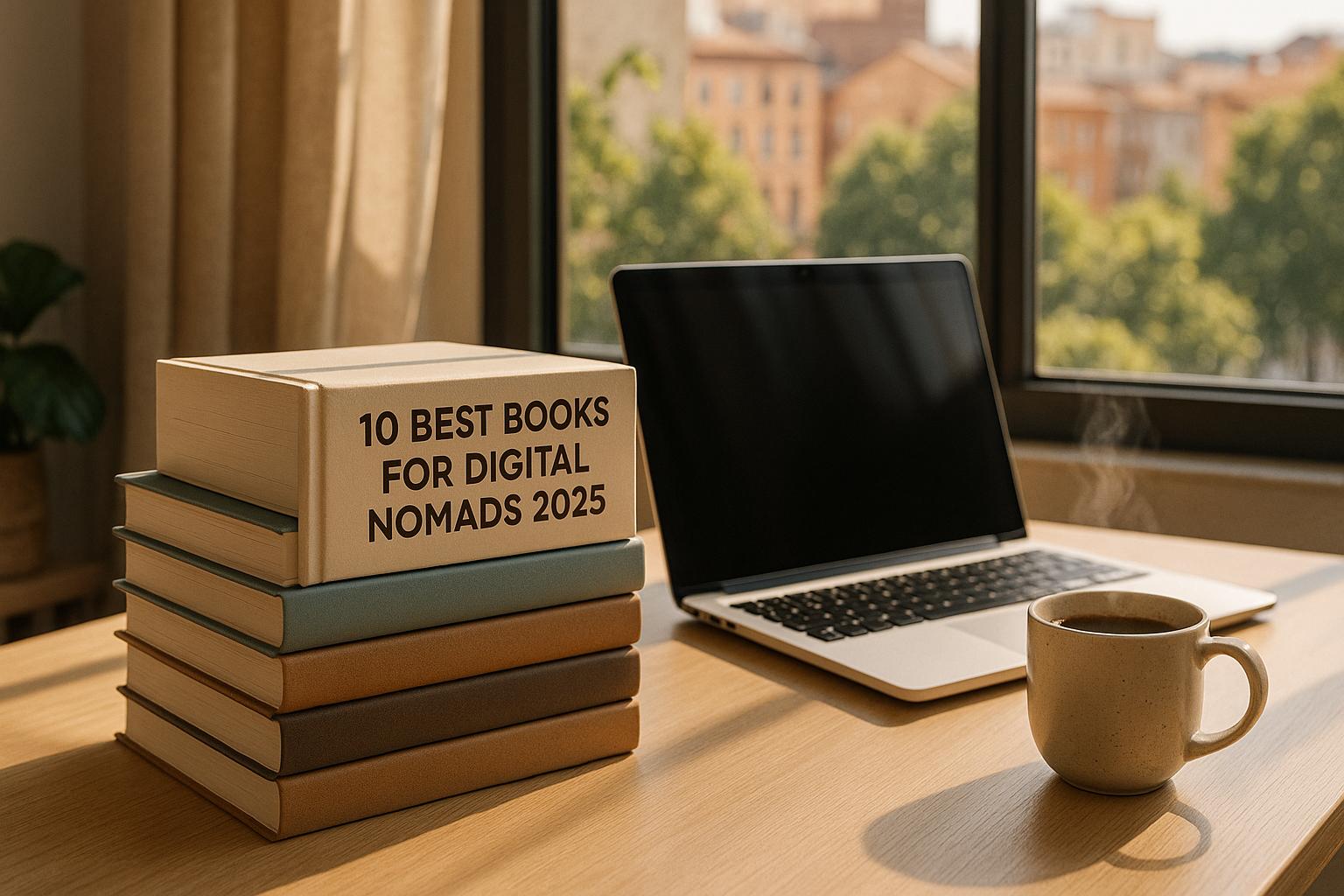Struggling to balance work and personal life? The right book can help. Here’s how to find one that matches your needs:
- Time Management: Learn techniques to boost productivity and free up personal time.
- Setting Boundaries: Discover ways to limit work’s impact on your personal life.
- Stress Management: Find tools to handle pressure and avoid burnout.
Steps to Get Started:
- Assess Your Needs: Track your work hours, personal time, stress triggers, and energy levels for a week.
- Pick the Right Category:
- Productivity: Books like Atomic Habits for building efficient routines.
- Boundaries: Titles like Boundaries by Dr. Henry Cloud for managing limits.
- Stress Relief: Burnout by Emily and Amelia Nagoski for handling pressure.
- Evaluate Books: Look for evidence-based advice, actionable steps, and authors with expertise.
For curated recommendations, explore Best Business Books. The right book can help you take control of your work-life balance.
Improve work life balance with these tools (research-backed ...
Identify Your Balance Needs
Start by pinpointing the specific work-life challenges you face and find books that directly tackle those issues.
Check Your Current Status
Track your activities for one week to get a clear picture of your current balance. Take note of:
- Hours worked, including overtime and any tasks completed at home
- Time spent on personal activities
- Sleep habits
- Common stress triggers
- Energy levels throughout the day
Use the table below to assess where you're feeling out of sync:
| Area to Evaluate | Signs of Imbalance | Priority Level (1-3) |
|---|---|---|
| Time Management | Missing deadlines, working late | Rate your concern |
| Personal Life | Canceled plans, missed family events | Rate your concern |
| Physical Health | Irregular meals, skipped workouts | Rate your concern |
| Mental Well-being | Constant worry about work, Sunday anxiety | Rate your concern |
| Career Growth | Stagnation, missed opportunities | Rate your concern |
This self-assessment will help you identify which areas need the most attention, guiding you to the right resources.
Match Books to Your Goals
Once you've identified your challenges, choose books designed to address those specific issues:
- Time Management Problems: Look for books that focus on productivity systems, efficient workflows, and strategic planning. These can help you get more done during work hours, freeing up time for yourself.
- Boundary Issues: If work often spills into your personal life or you find it hard to say "no", choose books that teach how to set boundaries and communicate effectively.
- Stress and Burnout: For those dealing with high stress or burnout, prioritize books offering practical stress management techniques and sustainable work habits.
For curated recommendations, check out Best Business Books.
When selecting books, consider the following:
- Urgency vs. Long-term Solutions: Choose books that address your immediate concerns but also provide strategies for lasting improvement.
- Ease of Implementation: Pick resources that align with the time you have to learn and apply new methods.
- Learning Preferences: Whether you prefer reading, listening, or interactive formats, select books that match how you best absorb information.
The right book can be a practical tool for improving your work-life balance.
How to Evaluate Books
When picking books to help with work-life balance, focus on their practical value and relevance.
Check the Author's Background
Choose authors with expertise in work-life balance, productivity, or mental health. Pay attention to:
- Professional credentials: Are they recognized experts in their field?
- Hands-on experience: Have they applied their strategies in real-life scenarios?
- Research background: Do they back their advice with solid research?
For instance, Dr. Cal Newport blends academic knowledge with actionable strategies, supporting his advice with well-researched methods.
Focus on Evidence-Based Strategies
Look for books that offer practical, proven solutions. Here's a quick guide to what to check:
| Evaluation Criteria | What to Look For |
|---|---|
| Research Basis | Studies, data, or clinical trials supporting the content |
| Case Studies | Real-world success stories that illustrate the concepts |
| Practical Tools | Worksheets, frameworks, or tools you can apply immediately |
| Clear Outcomes | Measurable goals or benchmarks for success |
| Actionable Steps | Step-by-step guides to help you implement the advice |
Books with a strong foundation in research and practical tools can provide actionable insights. However, don’t limit yourself - exploring different viewpoints can make your approach more well-rounded.
Explore Varied Perspectives
Broaden your understanding by choosing books with diverse approaches to work-life balance:
- Industry Insights: Authors from various professional fields offer unique takes.
- Cultural Views: Gain insights into how work-life balance is approached in different cultures.
- Career Stages: Find books tailored to your specific career phase, whether you're just starting out or a seasoned professional.
Pairing books on productivity with those focusing on emotional health can help you create a more balanced strategy.
For a curated list of books that meet these criteria, check out Best Business Books, which highlights top recommendations on work-life balance and professional growth.
Book Categories for Balance
Choosing the right books can help you tackle the challenges of achieving balance in your life. By organizing your reading around specific categories, you can focus on practical strategies that address your personal and professional needs. These categories are closely tied to the evaluation criteria mentioned earlier.
Time and Productivity Books
Books on time management and productivity can guide you in making the most of your day. They offer strategies to:
- Make better use of your work hours with proven techniques
- Build routines that align with your career and personal goals
- Reduce distractions to improve focus and efficiency
James Clear's Atomic Habits is a great example, providing straightforward advice on building habits that stick.
Books About Setting Limits
Setting boundaries is a crucial part of maintaining work-life balance. These books offer tools to:
- Protect your personal time from work-related demands
- Manage digital distractions and carve out personal space
- Establish clear limits to maintain healthy relationships
Dr. Henry Cloud's Boundaries is a standout resource, offering a structured approach to creating and maintaining limits in all areas of life.
Stress Management Books
Stress management books equip you with tools to stay mentally strong while juggling responsibilities. They cover topics like:
- Spotting the early signs of stress and burnout
- Using practical strategies to cope with daily pressures
- Finding ways to recharge and recover effectively
Emily and Amelia Nagoski's Burnout provides a science-backed guide to recognizing and managing stress, making it a must-read for professionals.
For more book recommendations in these areas, check out Best Business Books. You'll find a curated selection of titles designed to help you improve both your professional skills and your personal well-being.
sbb-itb-1ae7b2a
Book Selection Methods
To refine your book choices, consider using a structured approach. A clear evaluation process can help you find books that align with your goals and preferences.
-
Initial Assessment
- Check the author's background and expertise in the subject.
- Look for evidence-based approaches or research-backed methods discussed in the book.
-
Detailed Review
- Scan the table of contents to see if the topics match your interests.
- Read sample chapters to evaluate the writing style and clarity.
Book Comparison Chart
A comparison chart can help you rate books based on important factors:
| Criteria | Book Details | Rating |
|---|---|---|
| Topic | (e.g., Time Management, Stress Relief) | |
| Target Reader | (e.g., Beginner, Intermediate, Advanced) | |
| Key Features | (e.g., Step-by-step tools, Actionable advice) |
Use this chart to score each book and pinpoint the ones that align best with your work-life balance objectives.
Using Book Lists
Make your search for work-life balance resources easier with curated book lists. These lists group titles by specific themes like productivity, leadership, and personal growth, helping you find the right fit for your needs.
Find Books by Topic
Books are sorted into categories, making it simple to tackle your specific challenges. For example:
- Productivity: Discover books on time management, building habits, and maintaining focus.
- Leadership: Browse titles offering advice on effective team management.
- Personal Growth: Access resources focused on self-improvement and achieving life goals.
This structure ensures you can quickly locate books tailored to your situation.
Explore the "Top Reads" Section
The "Top Reads" section features popular picks that have helped others achieve better balance. Start with these recommendations, then narrow down your options to find exactly what you need.
Conclusion
Choosing the right books can make a huge difference in finding balance between work and life. Look for books that tackle your specific challenges with actionable advice.
Align with Your Goals
Pick books that match what you’re aiming to achieve. Want to boost productivity? Go for titles that offer clear, practical time management tips. Looking to grow as a leader? Find books that combine managing a team with maintaining your personal well-being. This kind of focused selection can lead you to well-organized book recommendations.
Explore Curated Lists
Themed book lists - covering productivity, stress relief, or leadership - can save you time by narrowing down your options to the most relevant reads.
Find What Works for You
Everyone’s situation is different. Whether you’re looking for help with managing your time, setting boundaries, or reducing stress, seek out resources that fit your unique needs.
FAQs
How do I figure out which aspect of work-life balance to prioritize?
To determine which area of work-life balance you should focus on first, start by reflecting on your current challenges and goals. Ask yourself questions like: Am I feeling overwhelmed at work?, Is my personal life being neglected?, or Do I need more time for self-care? Identifying where you feel the most imbalance can help you pinpoint your priorities.
You can also consider using tools like journaling or self-assessments to evaluate how you're spending your time and energy. Once you've identified a specific area - whether it's reducing work stress, improving personal relationships, or finding time for hobbies - you can look for books or resources tailored to that need. For example, books on productivity, mindfulness, or time management can offer actionable strategies to create a healthier balance.
How can I determine if a book or its author is credible on work-life balance topics?
To assess the credibility of a book or its author on work-life balance, start by researching the author's background. Look for their professional experience, qualifications, or expertise related to the topic. Authors with a proven track record in fields like psychology, productivity, or workplace dynamics are often more reliable.
Additionally, check for reviews or endorsements from reputable sources. Books that are well-reviewed by experts or widely recommended by professionals in relevant industries tend to be more trustworthy. You can also look for references or evidence-based content within the book, such as studies, data, or practical examples, to ensure it offers valuable and credible insights.
How can I make sure the strategies from a book will work for my specific needs?
To ensure the strategies from a book are applicable to your situation, start by identifying your personal and professional goals. Look for books that are relevant to your challenges and written by credible authors with expertise in the subject. As you read, reflect on how the advice aligns with your circumstances and consider adapting the strategies to fit your unique context.
Additionally, take notes and create actionable steps based on the book's recommendations. Testing these strategies in small, manageable ways can help you evaluate their effectiveness and make adjustments as needed.


